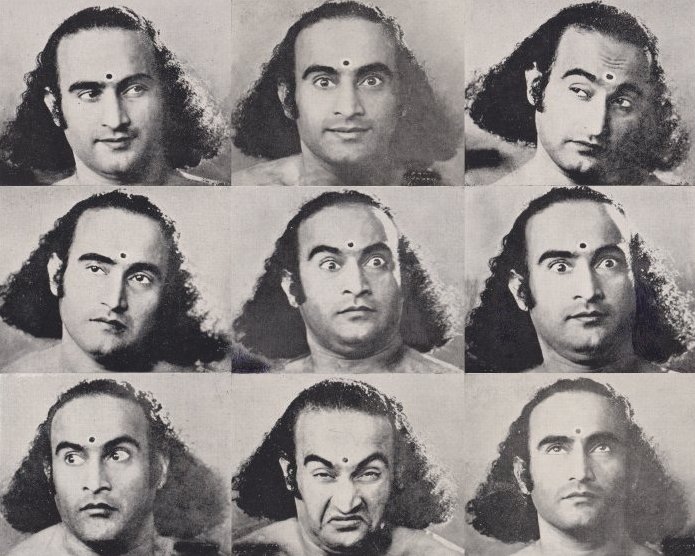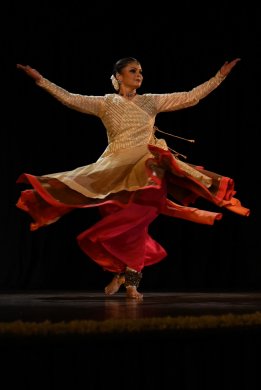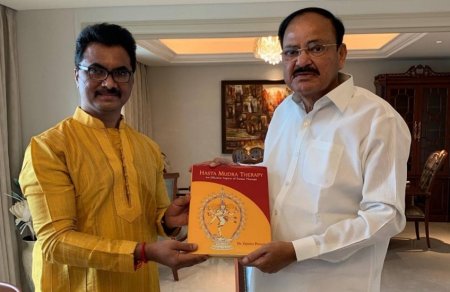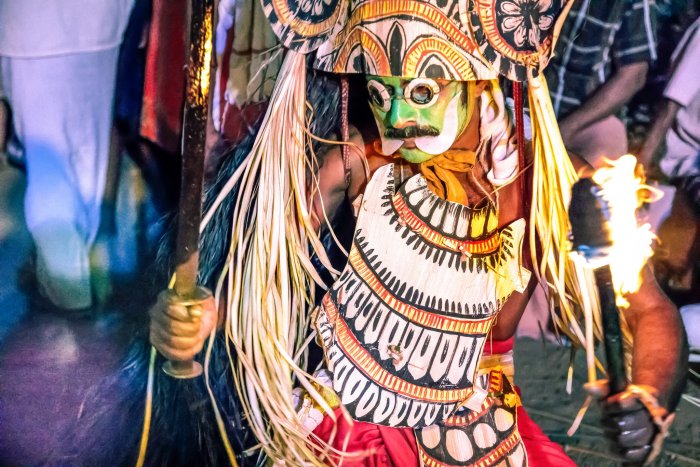Pl provide your name and email id along with your comment
Please type your name along with your comment. Anonymous and derogatory comments are likely to be removed.
Saturday, 26 March 2022
Interview - An imaginary interview with Guru Gopinath - Part 9 - Tapati Chowdhurie
Monday, 21 March 2022
Collaborative excellence marks Twelfth Pragjyoti Festival: Part 2 - Taalam: column by Leela Venkataraman
In the session on 'Modern Languages and Literary Studies' in association with Guwahati University, Priti Patel, one of the sought after composers/performers in Manipuri, spoke of working along with television personality and researcher into traditional art, Sadhana Srivastava, who has curated a film (for the SNA) highlighting the perils Manipur's indigenous art forms face in the world of today. Referring to traditional arts fashioned by a people who lived in the lap of nature, who thought of the sounds of the lute as imitating the sound of wind passing through bamboo groves, Priti referred to how raw materials from nature were utilised to fashion an instrument like the Pena (oral teaching) which is like the human voice, tugging at your heart strings with the emotive power of the music produced. Speaking of the Lai Haraoba celebration in the open even today, where the ancient, animistic religion evoking abstract divinity, still very dear to the Meiteis, is restaged - through an elaborate process of awakening divinities existing in the water bodies, by the Maibas and Maibis, worshipping the Mailei Gods impregnated with the spirit of these divinities, and finally lulling them to sleep till the next year - all done to the accompaniment of the Pena. One wonders about the future for now the Pena is becoming a rare instrument. It is the high ritualism which enabled art forms to thrive. Now with rituals compromised, art forms too are in danger.
Pl provide your name and email id along with your comment
Saturday, 19 March 2022
Collaborative excellence marks Twelfth Pragjyoti Festival: Part 1 - Taalam: column by Leela Venkataraman
The twelfth Pragjyoti International Dance Festival, hosted for the last eleven years in Guwahati by Kalpa (shared society for promotion of literature, culture and social harmony), a collaborative online event this year, thanks to pandemic compulsions, featured some of the finest online workshops, built round aspects crucial to the art world today. Aside from the usual interactive sessions, the three and a half day event featured Danslenz, films and documentaries curated by Dr. Arshiya Sethi (founder of KRI Foundation, a key festival supporter), entirely devoted to the North Eastern part of India (as yet a hardly known part of the country for most Indians), with accent on the ecology of art, emphasising issues connected with climate change along with the very grey area of Arts and the Law.
In her introductory statement, Anwesa Mahanta, founder of Pragjyoti International established in 2009, referred to the festival as a 'multi destination' event, with many foreigners participating, its interdisciplinary approach helping broaden horizons of dancers in Assam, many becoming the State's best cultural ambassadors. Arshiya Sethi, calling this region her Karma Bhumi, inspiring her first great research work in 1974 on the Sattriya tradition, touched on the challenges created by the pandemic, which had increased the realisation in art circles about the dire necessity to work together to stay alive. Living amidst the shadow of decaying environment and climate change, it was important to create 'rasikas,' for whom guided viewing was the need of the hour. Sangeetha Dutta of Trinayan Kalabodh mentioned how at Lal Bahadur Sastri Bhavan in Delhi, special open forums on art and heritage were being organised as part of the 'Azadi ka Amrit Mahotsav' celebrations.Pl provide your name and email id along with your comment
Saturday, 12 March 2022
Notes on NEP (New Education Policy) - Soch: Column by Dr. Arshiya Sethi
Does the wise man choose the arts because
he is wise, or does he become wise because
he chooses the arts? Do the arts educate?Keeping these words in mind I want to look at the New Education Policy that proposes to have a large artistic footprint.
What is good about the New National Education Policy, 2020? It is undoubtedly an ambitious pan Indian overhaul, envisioned to cost up to 6% of India's GDP. It appears to be a body, mind and soul project. Celebrating interdisciplinarity, it employs digital and AI capacities in its template. This is a dimension that exponentially augments the possibilities of outreach, expansion of the imagination and evoking interest among syllabus creators, the teachers who will teach it and the children who will be covered under it, though policy makers and planners will need to be cognizant of the fact that the digital cover across India is uneven. The NEP aims to enhance skills, critical thinking and the matrix of values. Values feed into making a good human being and a better citizen. It is part of the soft aspects of nation building, which most development planning, even in India, tends to ignore. We are fortunate that within seven decades of the birth of the nation, we are getting a chance to address this aspect, once again. One of the most interesting aspects of the NEP is that STEM, Humanities, and the Arts find equal space in it. This stress on the arts has been formally and statutorily introduced for the first time, in such a well-considered and respectful manner.
Pl provide your name and email id along with your comment
Tuesday, 8 March 2022
Interview - Gauri Diwakar on surviving two years of the pandemic - Shveta Arora
I spoke to Kathak dancer and teacher Gauri Diwakar, a leading performer and choreographer, about how she survived without even riyaaz for nearly five months in 2020, how her dance life slowly took on a new form in the 'new normal', and how she has gradually chosen a side in the debate over online performances.
Responding to the lockdowns as an individual and as a dancer...
I did my last tour in February 2020 for SPIC MACAY and I remember thinking, it's been far too hectic recently, let's take a break for a week and then start doing riyaaz again. I had a show in Kokrajhar on 16 or 17 March anyway, and before that, shows in Delhi and lec-dems for SPIC MACAY, so that's when I took a little break, in February 2020. And right after my break, all these shows started getting cancelled one by one. I had been in London in January before that, I had seen what was happening (in terms of the spread of Covid and the restrictions), but I had not imagined anything of this sort happening in India. At first, I cancelled my classes sometime between January and March because there are many children in my batches, and after that there were all these show cancellations. These came as a shock; this had never happened to me before.
Pl provide your name and email id along with your comment
Saturday, 5 March 2022
Book Review - Hasta Mudra Therapy by Dr. Vijayapal Pathloth - B. Naveena
The book throws fresh perspective on hand gestures and their manifold manifestations in Natya, Yoga, Ayurveda, spirituality, religious rituals et al, with special emphasis on their role in alternative therapy. The author has reportedly experimented its efficacy on adults and children belonging to the Hyderabad-based Sanskriti school for the mentally and physically- challenged.
The book opens with a brief overview of dance per se, also describing its connection with other disciplines. The first chapter deals with the word 'dance therapy', its origin from the Greek word, 'therapeia', different types of therapy, instances where it has helped dancers face personal crises, personal losses and physical ailments and also its spread across the world. The author lists several pioneers of modern dance and practitioners of psychiatry who have taken Dance Movement Therapy to wider horizons. He also enumerates the different Associations, Universities and other global bodies which enlist members and practitioners, while also throwing light on research in Dance Therapy. The author also lists various Indian treatises on dance and this compilation is quite exhaustive.
Pl provide your name and email id along with your comment
Friday, 4 March 2022
Unmute - Don't just see but also hear the Dancing Child-Part II - Dr. Arshiya Sethi
The Unmute.help website is an open, free resource to which people go when they want to understand arts and the intersection with the Law. Recently, Manch UK included our work in its record of important work done during the COVID pandemic. The fact that there is an Unmute.help website, the fact that people have started going to it and the fact that we are allowed to discuss such issues in forums like Narthaki or even in the general media, are all reassuring, positive and encouraging developments. They give us the fuel and energy to continue this work that is being done pro bono.
Less affirming is the sharings that are done of travesties and abuse of power that threatens the very ecosystem of the arts. Every sharing makes the heart sink and serves to remind us about the enormity of the task at hand. Sometimes it helps us sharpen our focus and attention on a particularly disturbing issue at hand and organically prioritizes our work ahead. Sometimes, the prompt comes from an unrelated event. Sometimes both spheres, the core and the peripheral, imbricate.
In January this year, I began a focus on the rights of the child artistes, catalyzed by the Supreme Court of India ruling that the 'skin to skin' contact was not necessary for a crime to come under the purview of the POCSO Act. In this column, I continue unpacking the ideas of how to keep the child in the arts, safe. I want to share a disturbing story from the arts and how a vulnerable child has suffered. It makes me angry, but believing in the intrinsic goodness of mankind I hope that it happened out of ignorance. But really ignorance is no excuse since we are expected to know the law of the land. We need to be proactive about it. This column helps in that direction and I hope that many of you who work in the arts with children will read this till the end.
Pl provide your name and email id along with your comment
Thursday, 3 March 2022
Prism - Postmodern meets Pre-Dravidian - Marc-Paul Lambert
Like a god creator, the artist decides either to pick up the movement material from the abstract, inventing coordinated phrases coming out of nowhere. He (or she) might ask the team to develop on found movements during improvisations. Creating a new feeling by moving adequately is not easy, but it should happen. It supposes you are altering although not intentionally, the audience's overall perception of the event, busy with collecting muscular and senses analogies. Spectators are figuring out on stage the plausible meanings conveyed by gestures between all parts.
Pl provide your name and email id along with your comment
Tuesday, 1 March 2022
Anita says...March 2022
We have almost arrived at an important moment!
TWO WHOLE YEARS HAVE PASSED BY...104 weeks that started with a "trial lockdown" on Sunday March 22, 2020 and will be completed on March 20, 2022.
And now, two whole years later, it is time to take stock of our lives, ourselves and our artistic pathways.
All of us have either suffered the virus - some more than once - and many have lost loved ones.
My own personal loss of my favourite uncle one month ago, came as a rude shock and a wakeup call. Seeing the stream of mourners who came to condole made me realise that no amount of wealth and resources can make up for the way every face had aged, grayed and wrinkled over the past 2 years.
Sprightly friends were walking slower, stooping a little, shuffling too. Some came in wheelchairs and others were missing. The virus had taken their last breath.
The only gleaming, glossy, glamorous objects on display were the new SMART PHONES that everyone was carrying!
Such morbid thoughts may not be the way to start an editorial when Spring is in the air and we are all looking forward to warmer weather and getting out into the "real world". Holiday and destination travel have quadrupled.
Pl provide your name and email id along with your comment



